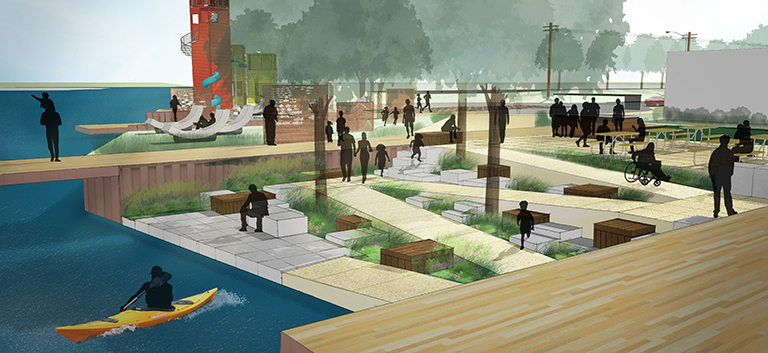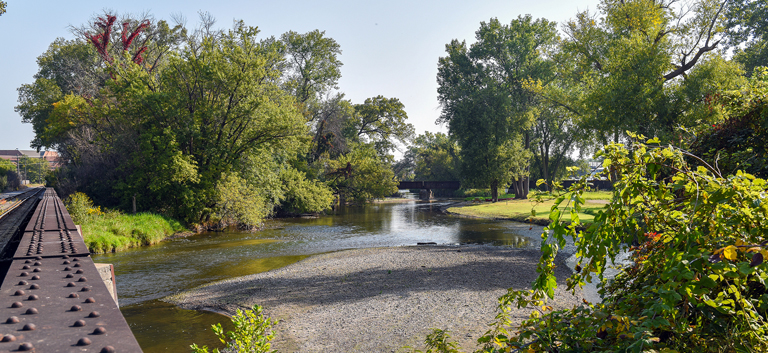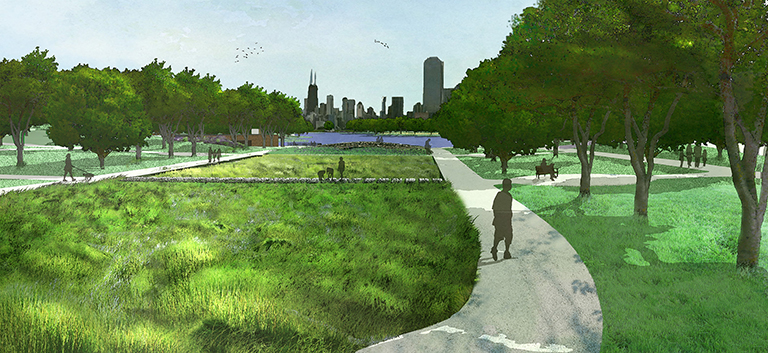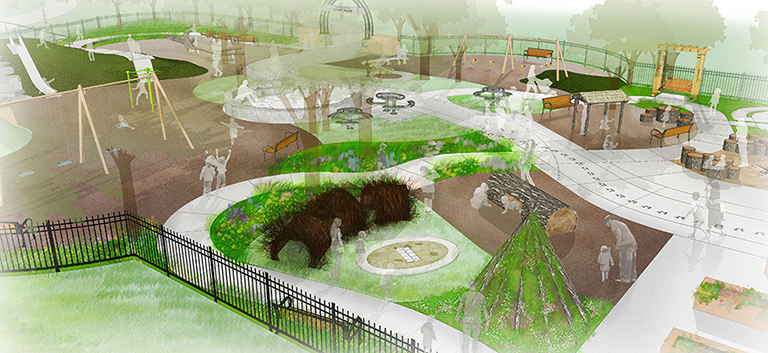Ecological Emphasis Dismisses Standard Notions of ‘Park’
 When we hear the word “park,” many of us envision swings, slides, and colorful climbing structures because this is how most of today’s children’s parks were designed. In fact, many of these parks are indistinguishable from one another. Urban communities, however, are starting to ask for something different. They want more. They want the opportunity for users to engage in experiences they might not otherwise have available in other parts of their life. They want more nature in their parks, and landscape architects are coming up with ecologically based designs to meet this demand.
When we hear the word “park,” many of us envision swings, slides, and colorful climbing structures because this is how most of today’s children’s parks were designed. In fact, many of these parks are indistinguishable from one another. Urban communities, however, are starting to ask for something different. They want more. They want the opportunity for users to engage in experiences they might not otherwise have available in other parts of their life. They want more nature in their parks, and landscape architects are coming up with ecologically based designs to meet this demand.
While each ecology-based park will turn out unique, the steps taken to create them should be the same on any given project. Four basic steps lead to the greatest success.
Step One – Ecological History
The first step is to identify the ecology that makes the space unique. Find the spirit of the place. Look at publicly available documents about the site. Research the historical use of the space and look up previous survey notes to find out what plant and animal species were there – all the way back to pre-European settlement conditions.
Step Two – Current Ecology
 The next step is to identify what life the site currently supports. Are historical plant and animal species still present? Have invasive plant species taken over? How is this space used today? This step can be done by having an on-staff ecologist or hired ecologist conduct a walking inventory or natural resources inventory (NRI) of the site. This relatively low-cost task can provide a large amount of data on your site.
The next step is to identify what life the site currently supports. Are historical plant and animal species still present? Have invasive plant species taken over? How is this space used today? This step can be done by having an on-staff ecologist or hired ecologist conduct a walking inventory or natural resources inventory (NRI) of the site. This relatively low-cost task can provide a large amount of data on your site.
Step Three – Consider the Possibilities
 Once you have the historical data and the present data, you can compare the two and look at what has changed, how it has changed, and what caused the change. You can also better understand what impact any new design will have on the site. For example, a big concern for many communities is whether this type of design will bring increased undesirable animals such as mosquitoes or rodents. The typical answer is maybe, but probably not. Most often you see an increase in beneficial predator species such as red fox and hawks, which minimizes the rodent populations. Surprisingly it is the animals that most people want to attract that cause the most problems. Deer, rabbits, and turkeys, for example, cause road hazards.
Once you have the historical data and the present data, you can compare the two and look at what has changed, how it has changed, and what caused the change. You can also better understand what impact any new design will have on the site. For example, a big concern for many communities is whether this type of design will bring increased undesirable animals such as mosquitoes or rodents. The typical answer is maybe, but probably not. Most often you see an increase in beneficial predator species such as red fox and hawks, which minimizes the rodent populations. Surprisingly it is the animals that most people want to attract that cause the most problems. Deer, rabbits, and turkeys, for example, cause road hazards.
Step Four – Plan an Exciting Future
 The last step is to incorporate all the information gained – the history, the ecology, and the desired park program uses – and decide what the story of this space should be moving forward. Working with the client, the landscape architect/designer can now decide whether to bring back some of the historical plant species that have disappeared, preserve what is still there, and/or eliminate unwanted invasive species. Together a team can create a unique park experience.
The last step is to incorporate all the information gained – the history, the ecology, and the desired park program uses – and decide what the story of this space should be moving forward. Working with the client, the landscape architect/designer can now decide whether to bring back some of the historical plant species that have disappeared, preserve what is still there, and/or eliminate unwanted invasive species. Together a team can create a unique park experience.
Landscape architects and clients are realizing ecology can be more than just a filler of space in between programmed park uses. It can and should have its own special use/purpose in the complete story of a space.
Here are three communities that have used – or are using – these steps to create unique, ecologically based parks:
- South Beloit, Illinois – Nature at the Confluence: Check out Ayres Associates’ project profile and the Nature at the Confluence website.
- Chicago, Illinois – North Pond Nature Sanctuary, Lincoln Park
- Milwaukee, WI – Slosh Park, Harbor District
Looking for more inspiration relating to parks? Ayres’ landscape architects deliver a broad variety of designs from splashpads to neighborhood parks and downtown plazas. View our park planning and design project profiles here. For additional information contact one of the experts in our landscape architecture group.

Post a comment: